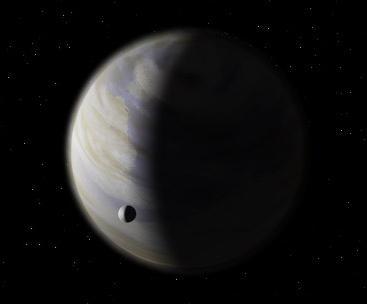A NEW BOOK ON AREA 51 SAYS USSR IS CAUSE OF ROSWELL INCIDENT
Is the truth stranger than conspiracy-theory fiction? A new book on Area 51 that's already generating a ton of buzz says there was no alien spacecraft that crashed in Roswell, New Mexico in 1947. Instead, Stalin did it—maybe wouldn’t that be weird
According to Annie Jacobsen, Author of "Area 51," the spaceship was actually a Soviet spy plane that came down during a storm. Jacobsen claims it was filled with bizarre, genetically engineered child-sized pilots. Then-Soviet leader Joseph Stalin was hoping, Jacobsen alleges that the new cause widespread panic in the U.S.
The story gets even stranger: The leader of the USSR had apparently been inspired by the 1938 radio adaptation radio broadcast of the HG Wells story "War of the Worlds," produced by Orson Welles. The broadcast triggered panic in some listeners who tuned in and mistook it for a real-life alien invasion. (Though later students of the episode claim that the media of Welles' day vastly exaggerated the scale of public alarm over the broadcast.)
And those ET-looking aviators? They were scientific experiments created by the "Angel of Death," Nazi doctor Josef Mengele, for the USSR after the war. The flight was piloted remotely, according to accounts in the book, and was filled with a crew of "alien-like children."
According to Jacobsen's source, a retired engineer who was put on the project in 1978, the look of the human experiments could explain the alien conspiracy theories: "They were grotesquely deformed, but each in the same manner as the others. They had unusually large heads and abnormally shaped oversize eyes."
Is any of this true? Hell who knows? Documents surrounding the Roswell incident are still classified--as is virtually all information related to the mystery spot.
Still, lack of proof hasn't exactly stopped the book from sparking speculation on the media circuit and on the Web. In the last day, Yahoo! searches skyrocketed 3,000 percent for "area 51 book." And the tome is penned not by a crackpot conspirator, but a respected journalist.
-------------------------------------------------------------------------------------------------------------------------------------------------
A rocky alien planet called Gliese 581d may be the first known world beyond Earth capable of supporting life as we know it, a new study suggests.
Astronomers performing a new atmospheric-modeling study have found that the planet likely lies in the "habitable zone" of its host star — that just-right range of distances that allow liquid water to exist. The alien world could be Earth-like in key ways, harboring oceans, clouds and rainfall, according to the research.
This conclusion is consistent with several other recent modeling studies. But it does not definitively establish that life-sustaining water flows across the planet's surface.
The new study assumes that Gliese 581d, which is about seven times as massive as Earth, has a thick, carbon-dioxide-based atmosphere. That's very possible on a planet so large, researchers said, but it's not a given. [Video: Life-Sustaining "Super Earth" Gliese 581d]
The Gliese 581 system: Worlds of possibilities
Gliese 581d's parent star, known as Gliese 581, is a red dwarf located 20 light-years from Earth, just a stone's throw in the cosmic scheme of things. So far, astronomers have detected six planets orbiting the star, and Gliese 581d is not the only one intriguing to scientists thinking about the possibility of life beyond Earth.
Another planet in the system, called Gliese 581g, is about three times as massive as Earth, and it's also most likely a rocky world. This planet received a lot of attention when its discovery was announced in September 2010, because it's located right in the middle of the habitable zone. That makes 581g a prime candidate for liquid water and life as we know it — if the planet exists.
Some researchers question the analysis used to discover the planet, and say they cannot confirm 581g in follow-up studies. The planet's discoverers, however, are standing by their find. [The Strangest Alien Planets]
Gliese 581d orbits outside of 581g, far enough away from its star that researchers first thought it too cold for life when it was originally discovered in 2007. But a strong greenhouse effect may warm 581d up substantially, perhaps enough to support liquid water.
That's the tentative conclusion of the new study, as well as several other recent studies by different research teams that also modeled Gliese 581d's possible atmosphere.
Modeling an alien atmosphere
The planet Gliese 581d receives less than a third of the solar energy that Earth does from our sun, and it may be tidally locked (a situation in which one side of the world always faces its sun — a permanent day — and the other faces away, producing eternal night).
After Gliese 581d's discovery, it was generally believed that any atmosphere thick enough to keep the planet warm would become cold enough on the night side to freeze out entirely, ruining any prospects for a habitable climate, researchers said.
The research team tested that possibility in the new study, developing a new kind of computer model that simulates alien planets' atmospheres and surfaces in three dimensions. The model is similar to those used to study climate change on Earth.
When the team ran the model, they found that Gliese 581d probably can indeed host liquid water if it has a dense carbon dioxide atmosphere. Even though the planet is relatively far away from its dim red dwarf parent star, it could be warmed by a greenhouse effect, with daytime heat circulated around the planet by the atmosphere.
The team, led by scientists from the Laboratoire de Métrologie Dynamique (CNRS/UPMC/ENS/Ecole Polytechnique) at the Institut Pierre Simon Laplace in Paris, France, published their results in The Astrophysical Journal Letters.
The work remains speculative.
To determine conclusively if Gliese 581d is truly habitable, future work will probably have to detect and characterize its atmosphere directly. And that is likely years off, since it requires the development of new and advanced telescopes. Human-made probes won't be getting to the planet anytime soon; with current technology, it would take spacecraft hundreds of thousands of years to make the 20-light-year trek.
By Karl Klooster
Of the News-Register
All week long, locals were worried that Oregon's peculiar brand of liquid sunshine might rain on their parade - their UFO Parade, that is. As it turned out, the weather could not have been better.
The day was overcast, serving to hold the temperature in check, but never threatening. Nary a drop of unwelcome precipitation dampened our annual welcoming of friends from afar.
Had the unnecessarily concerned considered the momentous nature of this event, their fears would have evaporated into a cloud of interstellar gases. After all, powers beyond our wildest imaginings are said to look favorably on so-called encounters of the third kind.
But what about interactions among visiting aliens and resident humans?
Sellers of retail goods on Main Street seemed quite pleased. Reports of solid traffic abounded.
Likewise with purveyors of food and drink. Lines at Third Street Pizza, Serendipity Ice Cream and Union Block Coffee attested to the business generated by a sidewalk-cramming crowd, lining the length of Third Street from Baker to Galloway.
McMenamins did a booming business from a massive tent on Evans, hawking beer, sausage and chicken at a furious pace.
A block west on Davis, the Soroptimist Club sold Alien ears at $4 a pop. From adjacent quarters, a McMinnville Noon Kiwanis crew turned hot dogs and hamburgers into alien fare that seemed to fare quite well with a hungry human crowd, as well as numerous creatures of questionable origin.
But what of those beings from out there? Are there really aliens in our midst? On that day, it can be said with absolute certainty that there were.
Visitors from places as foreign as Australia, New Zealand, Russia and Canada - even California, for goodness sake - came to McMinnville to savor the sense of silliness and carefree delight that only such an event can engender.
One rather charming fellow, whose accent bespoke British through and through, said he had come to cover the festival for a London magazine. But he may have let his true identity slip when he indicated he was from the United Klingdom.
The most accurate comment may be that McMinnville's UFO Fest really does put everyone in an Alien Daze.
Although judging the expressive characteristics of cultures so entirely unlike our own must be difficult for human beings, the float deemed best for 2011 obviously arose out of a collaboration between earthlings and extraterrestrials.
In some mystical manner, water flowed freely within the float. It bore the names Cosmic Inns of America and Everblue Waterpark Hotel. That clue led to the deduction that Evergreen's Wings & Waves Water Park, scheduled to open next month, was behind the winning entry.
The ubiquitous use of aluminum foil made one wish to own some stock in ALCOA or Reynolds. From a didgeridoo to an entire automobile, its otherworldly sheen dominated the scene.
But perhaps the best parade entry of all featured a group of talented young humans, 133 strong. The combined Patton-Duniway Band, under the direction of Marc Dana, wowed the crowd with flawlessly executed renditions of "Louie Louie."
The band's T-shirts proclaiming "Music Is Out of This World," and that says it all. The universal language, as Richard Dreyfus discovered in the movie Close Encounters, is one of peace and harmony that emotes from notes on an audio scale.
Winners also emerged from an alien video competition sponsored by - whom else? - our own Movietime Video.
In the 12-18 age group, the $100 top prize went to Paige Benner, Maddy Chaufty, Lillian Hallett and Amanda Foster of McMinnville for "The P.O.D. Invasion." Haley Madland, Madison Klienstuber and Hannah Madland of McMinnville claimed the $50 second prize for "The Piralian Good Scheme."
In the 19 and over age group, top prize went to Phil Guzzo of McMinnville for "Maklar, Anyone?" and runner-up honors to the faculty and student body at Sheridan's Delphian School for "Attack of the Tinfoil Terror."
Honorable mentions were accorded to Dalton Zook of Carlton in the lower age group, for "Alien Mayhem," and Dustin Stratton of Salem in the upper age group, for "At Night"
It's hard to say whether this year's crowd exceeded last year's, but it certainly lingered longer, thanks to a generous street closure. Any time a massive throng occupies almost every square inch of available viewing space, you can certainly claim a goodly measure of success.
-------------------------------------------------------------------------------------------------------------------------------------------------
KANSAS CITY, Mo. -- It's been a strange past couple of months for some area people who follow UFO sightings.
They said the number of sightings nearly tripled last weekend alone.
It was not something Felix Figuero and his friends expected to see.
"Yeah, a strange metal-looking ship hovering over Lee's Summit," he said.
Figuero said he never really believed in UFOs until now, and he's not alone. Margie Kay and the Missouri Mutual UFO Network said it was a busy weekend in KansasCity , with 17 different people with sightings contacting her office after last weekend.
, with 17 different people with sightings contacting her office after last weekend.
Richard Vick wished he would have taken pictures of the strange sight that he saw in the sky Saturday off Interstate 435 and 63rd Street in Missouri.
Officials at Whiteman Air Force base said they did not have anything in the skies Saturday night, and they are not aware of any pending UFO investigations.




